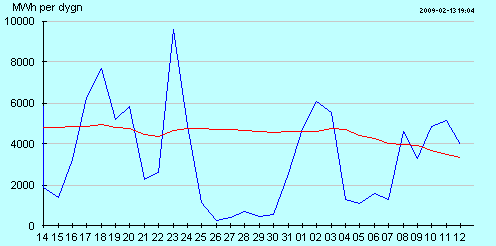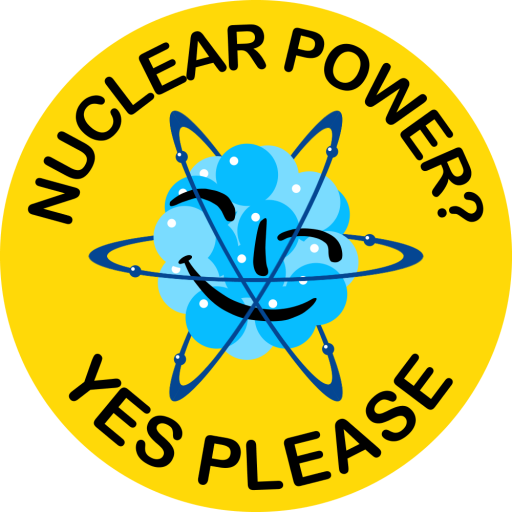“Sustainability” is a buzz-word these days. It is used often and eagerly, especially by opponents of nuclear power and proponents of renewable alternatives. There is an assumption to there that if something is renewable it is also automatically sustainable. There is also an assumption that nuclear power is not sustainable. How surprised people get when they find out that the exact opposite is true…
Let’s take a step back and for once examine what we actually mean by the concept of sustainability. In this article, we will be focusing on sustainable power production.
What sustainability is not
There seems to be a vague notion out there that something that is sustainable we can start using now and then keep using forever, or that something that is sustainable never consumes any resources. Well even by this faulty definition, renewables are not sustainable. This is because solar panels are not built from sunshine, nor are wind turbines built from a stiff afternoon breeze. You build them from consumable materials such as steel, copper, neodymium, gallium, arsenic, indium and other sometimes not too common materials. Also they have a finite life span after which they must be torn down and replaced. This means that solar and wind power does consume resources and in the end cannot be used forever.
But that is not the definition of sustainable, so let’s move on.
What sustainability is
“Sustainable development” was defined by the Brundtland-commission report “Our common future“ in June 1987 as:
…development that meets the needs of the present without compromising the ability of future generations to meet their own needs
Now let’s look at this. Does this say anything about renewables, using the same things forever, or even that using fossil fuels would be a bad thing? No it does not. The report doesn’t even say we cannot deplete a resource.
As for non-renewable resources, like fossil fuels and minerals, their use reduces the stock available for future generations. But this does not mean that such resources should not be used. In general the rate of depletion should take into account the criticality of that resource, the availability of technologies for minimizing depletion, and the likelihood of substitutes being available.
So what sustainability means is this:
- We have needs, and we must meet them.
- The future generations will also have needs, and we must not do anything that prevents them from getting these needs met.
People talking about sustainable development often talk about the future. But what they keep forgetting is that development that does not tend to the needs of the present as well, is not sustainable. Sustainable development must meet both current and future needs.
So now that we have established what sustainability actually means, let’s get to work applying it.
Applying the definition of sustainable to the real world
What are our needs when it comes to power? Among all needs, one is reliability.
Reliable power production means that we get have the amount of power we require, the instant we require it. Power is a perishable commodity. Especially electricity must be produced the very second we intend to consume it. If production does not meet demands, we have a power deficit. We do not accept power deficits. Not only is a power deficit annoying, but it can also be very dangerous as we are relying on electricity for a great number of critical applications, such as hospitals, tele-communications, cold food storage and pretty much anything that makes our society modern and thriving. Also power drops on the electrical grid risks damaging or destroying equipment connected to it.
Hence a source of power must be able to deliver as much as we want, the moment we want it or it is not, by definition, sustainable.
Are wind power and solar power sustainable sources of power?
Solar power and wind power are not living up to Brundtland commission definition of sustainable, for that most inane of reasons: when there is no wind, and when there is no sun, they do not deliver power. And by not doing that, they fail our need of reliability.
But surely there is always wind and sun, isn’t there? No, not always. Sun is a no-brainer, because sun does not shine 24 hours per day (except above the arctic circle in the summer but that doesn’t help us in the cold dark winter). So what about wind?

Reported wind energy production in Sweden, Jan-Feb 2009
The graph above is statistics for wind power in Sweden, fetched from Vattenfall’s page www.vindstat.nu. This page represents day average wind power production in Sweden for 30 days. The reporting plants range all the way from the south tip of Sweden to the far reaching north. The image is a snapshot of the graph taken at February 14, 2009.
The amount of installed wind power, that is to say the maximum power capacity, that reports to this webpage was 695 MW for the 30 days displayed, which is about 85% of all installed wind power in Sweden. This means that theoretical maximum power production in this graph is 16 680 MWh per day. Keeping this in mind, we see that for January 25 to January 30, wind power delivered 2-4% of installed capacity. After that it made a skip up, but less than a week later is was down below 10% again for another four days.
And again we must remind you that this is day average production and does not consider fluctuations during the day. This means that wind power in Sweden at times most likely delivered less than 1% of installed capacity.
This means that development that would rely on renewables such as solar and wind to meet our power needs, would not be considered sustainable unless there was something else that could entirely replace them for low periods. Such replacements do not exist.
Are bio-fuels sustainable?
Bio-fuels is another renewable alternative that is getting much attention. Do they meet our needs? That can be questioned, because while reliability is acceptable, the guarantees of capacity are shaky at best. And even worse is that bio-fuels strike at one of our most basic needs: health and long life. Bio-fuels, just like any other combustible power sources, release gases and pollutants that are harmful to human health. While being mostly neutral when it comes to carbon balance, this does not make the emissions any less harmful to people. Improvements can be made, but it must be asked how many premature deaths we are willing to tolerate before the technology of bio-fuels have been improved to acceptable levels. Hence this leaves the sustainability of bio-fuels in doubt.
Is nuclear power sustainable?
Let’s look at the needs we have, and that the future generations will have:
- Capacity
- Reliability
- Clean air, land and water
- Health
Does nuclear power fulfill these needs? Yes it does. Nuclear power has a capacity and reliability that is matched only by hydro power and fossil fuels. It does not pollute air, land nor sea in such a manner that we cannot accept it. And it does not threaten health in such a manner we cannot accept it. In fact, the power it replaces, such as for instance coal plants, kills about 2 million people prematurely every year from air pollution. So in replacing that, nuclear power saves lives.
Nuclear waste is an issue, yes. But it is a solvable issue, solvable in such a way it will not impede future generations from having their needs met. The science needed to know how to do that has been available since the 1970’s. It is part needing to gather experience on how to do it, and mostly politics that has kept us from implementing them so far. But for instance the Swedish method for a deep geological repository KBS-3 is at such a level of maturity it may begin being implemented in the near future. And more alternatives for dealing with nuclear waste are being made available as technological development progresses. We have no reason to assume nuclear waste cannot be dealt with in a sustainable manner that meets the definition by the Brundtland commission.
If we use nuclear power, must future generations use it too?
Using nuclear power now does not force future generations to use it. Nuclear plants have a finite life span of about 40-60 years. For renewables like solar and wind, their life span is even shorter. After that, the plants must be replaced. The future generations are free to choose whatever method of production they want for these replacements. They are not locked in by our choice. If they want to use something else, they are free to do so.
And choosing something else, they most likely will. Fusion power has dodged us for some time, but the progress is very promising. The research facility ITER is being constructed as we speak. The follow-up DEMO is on the drawing board. If there are no big snags, work at these plants will be done by 2050, at which time fusion power can go commercial. If we are unlucky, it might be another 100 years before they work out the problems. Being pessimists, we can reasonably estimate that by 2150 at the latest, fission nuclear power, solar, wind and pretty much everything else we use for our base load, can be phased out. This is what the Brundtland commission report speaks of: “the likelihood of available substitutes”.
And even if fusion power never takes place, whatever opponents of nuclear power claim can be used to replace nuclear power now, can most certainly be used to replace it then. If not, their case falls apart anyway and we must keep using nuclear power and make it even more effective.
So does it really matter that we risk depleting our nuclear fuel resources? No, it does not. If we start to reach the end of such resources, something that is not likely to happen by at least 2 000-5 000 years anyway, then future generations may switch to whatever else they want to use. They are not bound by our choices, and as such, the definition of sustainable development is met by nuclear power.
Conclusion
It has been said that the person that stares too far ahead, risks tripping over their own feet. This is true also in this matter. We must not forget that our needs must also be met, and not just the needs of future generations. Otherwise we do not have sustainable development. And sadly, renewables such as wind, solar and bio-fuels do not yet meet these needs. No matter how much we spend on research, we cannot force the sun shine when we want it to, nor make wind blow on demand. Bio-fuels rely on combustion, which we do not know yet how to make non-hazardous to health. Hence they are not sustainable.
Nuclear power however is, as far as we can make out, sustainable.



